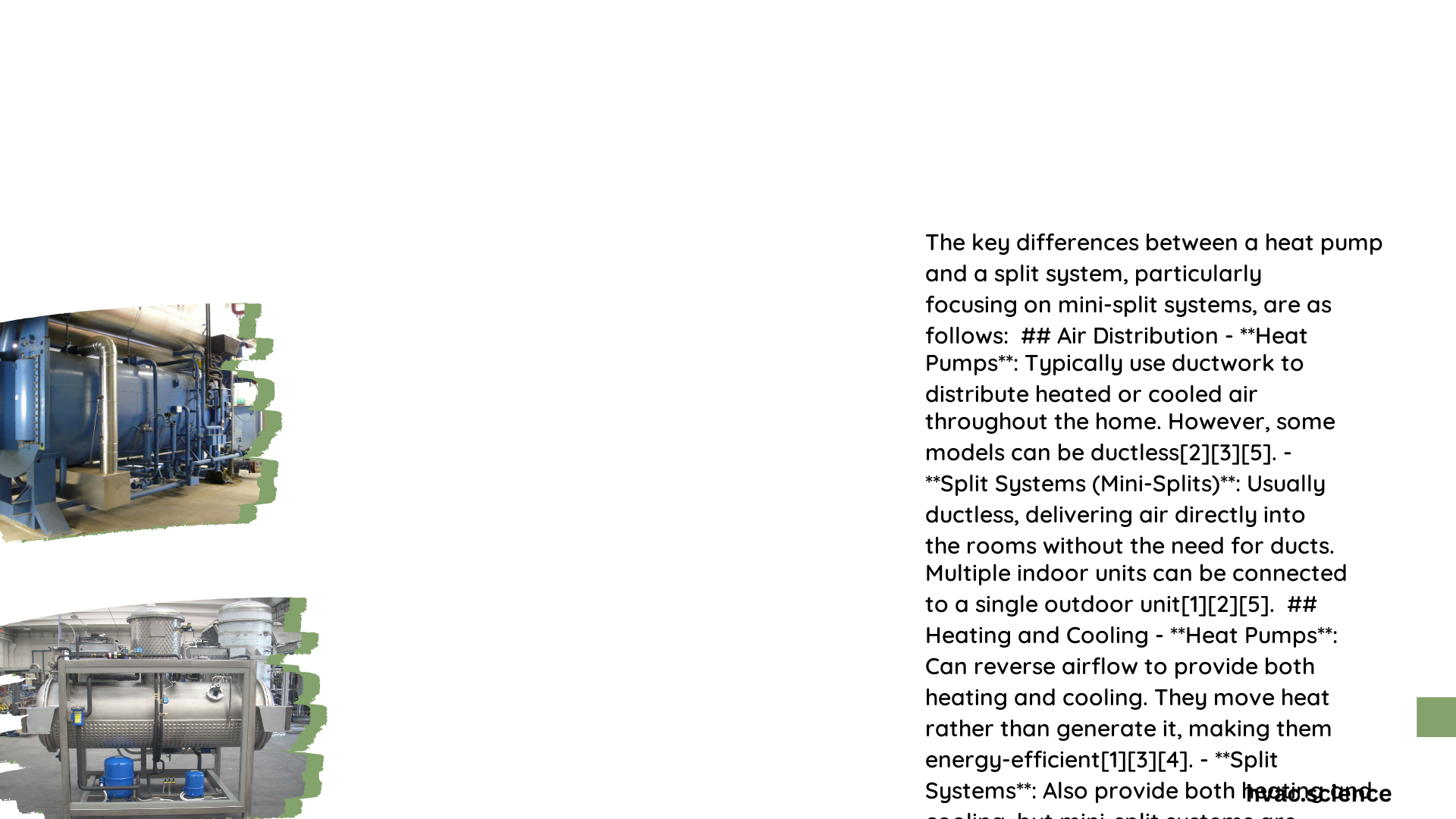Heat pumps and split systems are both advanced cooling and heating technologies that offer unique advantages for residential and commercial spaces. While they share similarities in basic design, they differ significantly in energy sources, operational efficiency, installation complexity, and performance across temperature ranges. Understanding these nuanced differences can help homeowners and property managers make informed decisions about their climate control solutions.
What Are the Core Operational Differences?
Heat pumps and split systems represent sophisticated climate control technologies with distinct operational characteristics. Let’s dive deep into their fundamental differences:
How Do Energy Sources Vary?
| System Type | Energy Source | Heating Mechanism |
|---|---|---|
| Heat Pumps | Electricity | Transfers heat from external air |
| Split Systems | Electricity/Gas | Uses electric cooling, optional gas heating |
Electricity Consumption
- Heat Pumps: Exclusively electric-powered
- Split Systems: Can integrate electric and gas components
- Key Difference: Heat pumps rely solely on electrical transfer, while split systems offer more flexible energy integration
What Performance Variations Exist?
Heat pumps excel in moderate climates, efficiently transferring heat with minimal energy expenditure. Their performance becomes challenging in extreme cold, where temperature differentials reduce efficiency. Split systems, particularly those with gas furnace integration, provide more consistent heating across broader temperature ranges.
Temperature Range Performance
- Heat Pumps:
- Most efficient between 40-70°F
- Efficiency drops below freezing
-
Require supplemental heating sources
-
Split Systems:
- Perform consistently across wider temperature ranges
- Gas furnace option provides reliable heating
- Less dependent on external temperature conditions
What Are Installation Considerations?
Cost Comparison
- Heat Pump Installation:
- Average equipment cost: $3,000 – $10,000
- Labor charges: $1,000 – $3,000
-
Minimal additional infrastructure required
-
Split System Installation:
- Average equipment cost: $3,000 – $15,000
- Labor charges: $1,000 – $3,500
- Potential gas line and furnace integration expenses
How Efficient Are These Systems?
Efficiency Metrics
- Heat Pumps:
- SEER Rating: 14-20
- HSPF Rating: 8-12
-
Energy transfer efficiency: 300-400%
-
Split Systems:
- SEER Rating: Varies based on configuration
- Gas furnace AFUE: 80-98%
- Flexible efficiency options
What Maintenance Requirements Exist?
Both systems require regular maintenance, but split systems with gas components demand more comprehensive servicing. Heat pumps generally have simpler maintenance protocols, focusing on refrigerant levels, electrical connections, and airflow optimization.
Recommended Selection Criteria
- Climate zone considerations
- Budget constraints
- Long-term energy efficiency goals
- Existing home infrastructure
- Personal heating/cooling preferences
Conclusion

Selecting between a heat pump and split system depends on multiple factors. Heat pumps offer streamlined, electricity-based solutions ideal for moderate climates, while split systems provide versatile heating and cooling options with potential gas integration.
Recommendations
- Moderate Climate: Prioritize heat pumps
- Extreme Temperature Regions: Consider split systems
- Budget-Conscious: Evaluate long-term energy savings
Reference:
– HVAC Direct
– Downtown Air
– Morris-Jenkins
